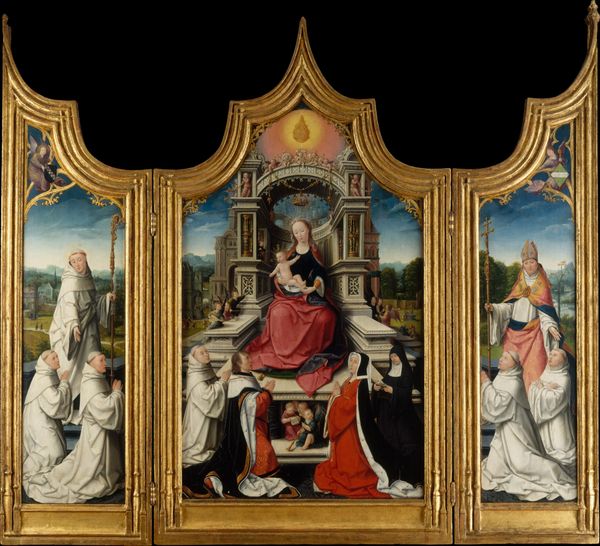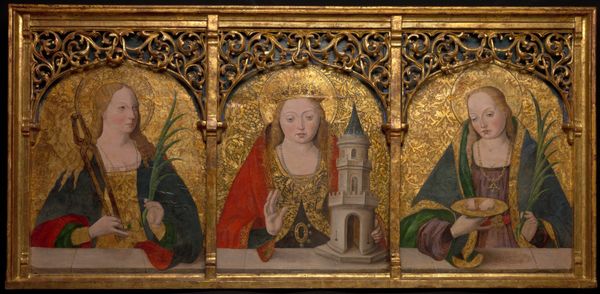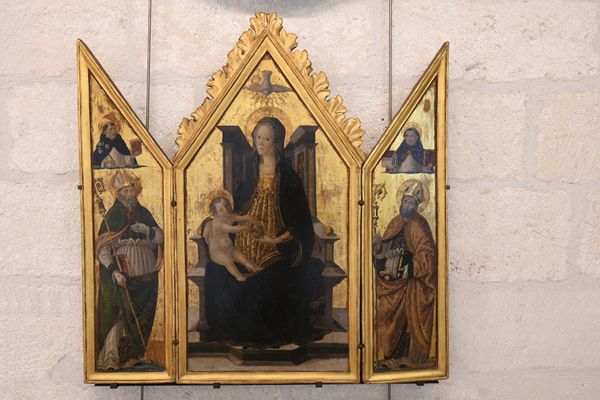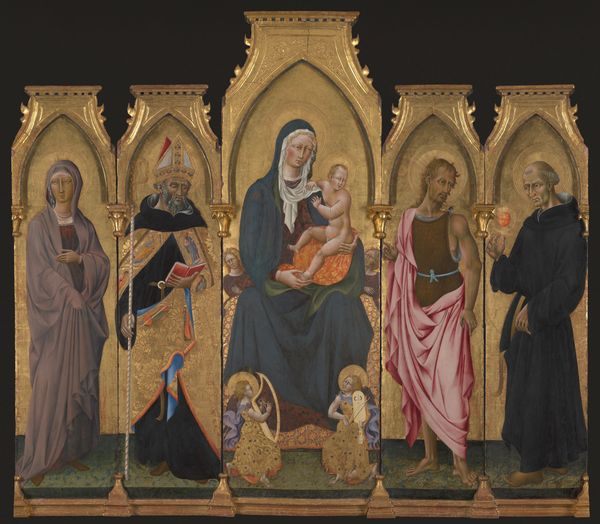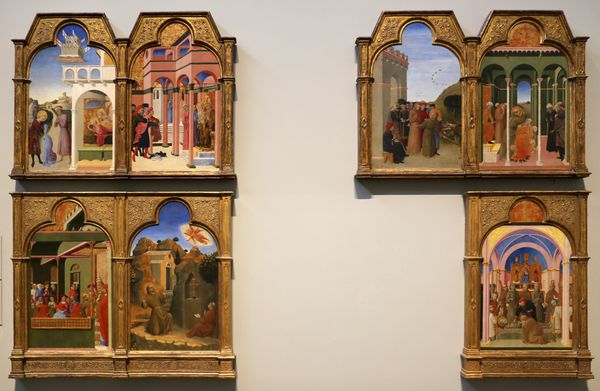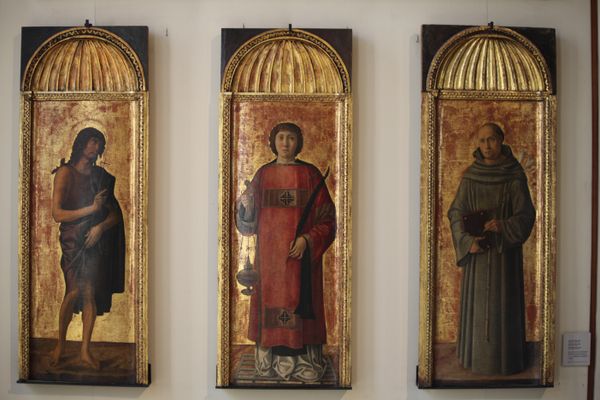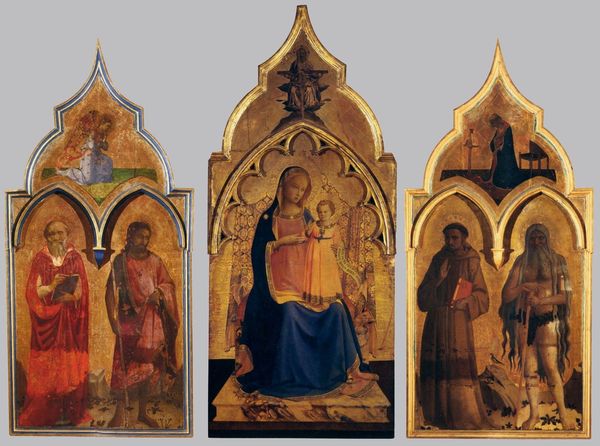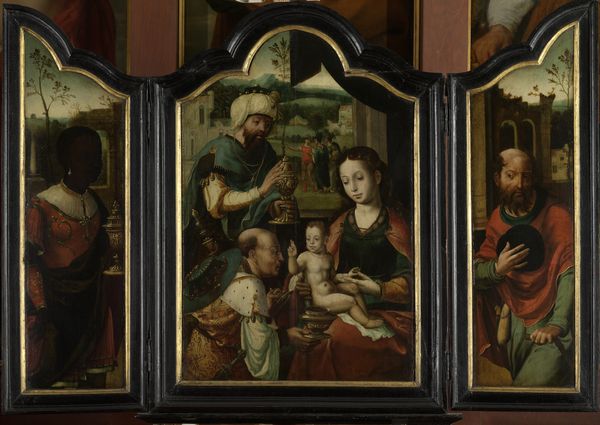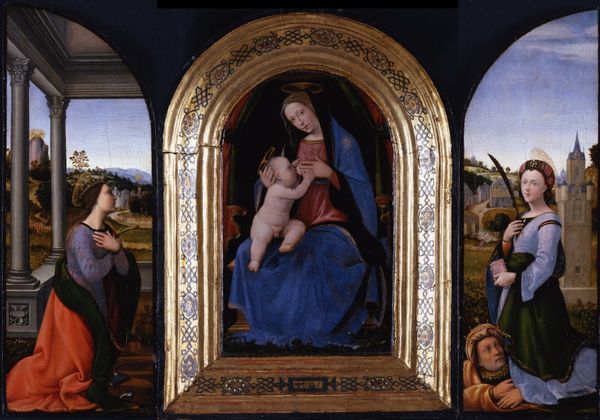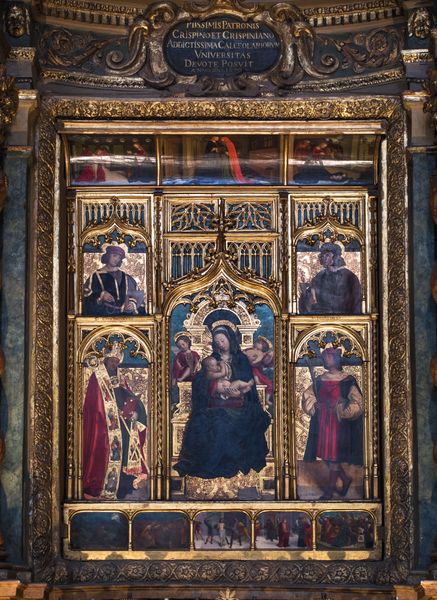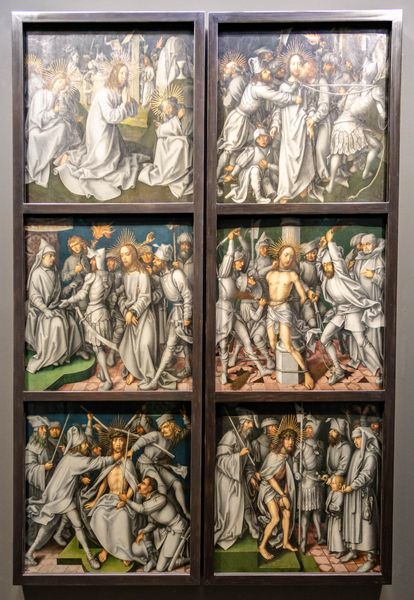
panel, painting, oil-paint
#
portrait
#
panel
#
narrative-art
#
painting
#
oil-paint
#
figuration
#
oil painting
#
academic-art
#
italian-renaissance
#
early-renaissance
Copyright: Public domain
Editor: We're looking at "Presentation at the Temple" by Ambrogio Bergognone, painted around 1494, an oil on panel work housed in the Louvre. The formality of the figures gives it a solemn mood. What can you tell me about it? Curator: This work isn't just a religious scene, it's a window into the social and political landscape of Renaissance Milan. Consider how the artist chooses to represent the figures – who gets to be central, who is relegated to the side? The virgin and child are shown, as per usual, surrounded by what? Mostly men. Who seems to be allowed access to divine events, and who seems like a mere spectator. Does that seem familiar to you? Editor: I see what you mean. It feels like the composition reinforces established hierarchies. How does the style play into that? Curator: The Early Renaissance style, with its emphasis on order and idealized forms, presents a world where everyone has a place, a role in this divinely ordained order. Where women lack autonomy. Even Mary in her motherhood is subject to male blessing. Can we consider then what "divine" might really represent? Editor: That makes me look at it differently. The Renaissance emphasis on humanism—shouldn't that give more agency to women? Curator: Precisely! This tension is crucial. Are Renaissance ideals being fully realized here, or are traditional power structures subtly reasserting themselves through art? What happens when the ideals of "rebirth" meet ingrained social conventions regarding gender and power? Editor: So, it’s not just a religious painting; it's a commentary on the evolving role of women in society. Curator: It certainly can be interpreted that way, among others. By interrogating those social constructs as represented through Bergognone’s choices, we unlock a richer understanding of this historical moment. Editor: That is true. Thinking about art as an active participant in social discourse has deepened my perspective on this work. Thank you.
Comments
No comments
Be the first to comment and join the conversation on the ultimate creative platform.
